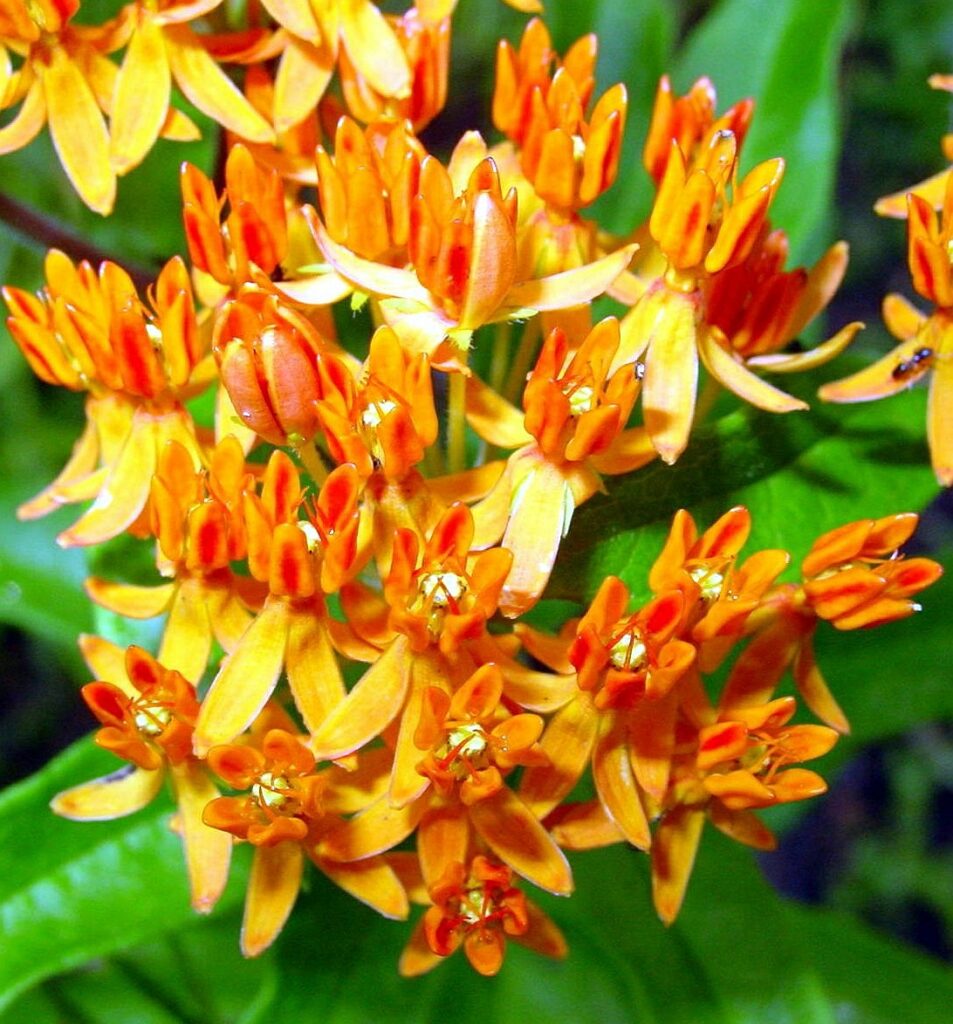People Can Better the Land
By Lisa Williams
My partner and I relocated to Black Mountain in Spring 2019, purchasing a new house with a decent-sized backyard in an existing neighborhood. One of my goals when we moved here was to provide a native habitat to support as many native plant and wildlife species as possible. I joined the Blue Ridge Chapter of the NC Native Plant Society and in 2021, I applied for and got a Certified Native Plant Habitat official sign for my yard that makes me feel like I am doing my part to help spread the native plant message.
The developer had left a few native trees: Carolina Hemlocks, a Black Walnut, and an old White Oak. His landscaper had planted eight Nandinas, several Italian cypress trees, a few other non-native species, and surprisingly, eight native Oak Leaf Hydrangeas. Grass seed was planted in the remaining graded areas.
In Fall 2019, we attended a great Master Gardener presentation at the Black Mountain Library on creating native habitat in your backyard. I asked the presenter, Deborah Green of Black Mountain, to look at my yard and her input was invaluable. In her role as a member of several organizations including Black Mountain Beautification Committee and our Blue Ridge Chapter of the NC Native Plant Society, she identified all the non-native species and told me which to keep and which to remove.
When Covid-19 hit in 2020, we decided to spend much of our leisure time outside in the back and side yards transforming them into native habitat. We had a landscaper widen our existing backyard berms an additional 3 feet so that we could plant native shrubs and wildflowers in front of the existing trees. The landscaper also removed some grass from the front yard and created a plant bed. We planted about 150 native plants in the back and side yards, including: Flame Azaleas, four species of coneflowers, four species of Coreopsis, Joe Pye Weed, Goldenrod, two species of asters, three species of Milkweed, Carolina Rose, Lady Ferns, Cardinal Flowers, Columbine, Blue-Eyed Grass and Dwarf Crested Iris, mostly supplied by Carolina Native Nursery. We also installed three insect habitat boxes and a bat roosting box. I removed the Nandinas and the English ivy that encroached onto our yard from the adjacent property. We were excited to find Monarch butterfly larva on our Common Milkweed, Butterfly Milkweed, and Swamp Milkweed in Fall 2020. I even captured a photo of a Monarch butterfly right after it emerged from the chrysalis.
After watching another Master Gardener presentation on Zoom in October 2020, we decided to try winter sowing. It was not very successful so I spread the soil from the non-germinating winter sowing jugs on a proposed “pollinator meadow” I had cleared of grass. I also spread some other native seed over this area. Lo and behold, in the spring, we had many different plants sprouting from seed and flowers from spring through fall. We saw a variety of bee species and other insects in the meadow throughout the growing season.
Compared to the huge effort in 2020, 2021 was low key. I expanded beds in the south-facing side yard and the remaining bed in the backyard (using landscaping fabric and removing grass), and planted native wildflower seed and additional native plants. I also removed several purple coneflowers from the crowded meadow and moved them to other locations and gave a few to my neighbor. In the Fall, after watching another Zoom presentation, I collected wildflower seeds from several plants and shared them with friends. I applied for and received the Native Habitat Certification from the Native Plant Society and a Certified Pollinator Habitat certification from Asheville Greenworks. I have a spreadsheet of all the plantings by location to keep track of it all and we have planted about 80 different NC native and/or local native species.
Although transforming our yard into a native garden has been a lot of work, it is a labor of love. Gardening has always been very meditative for me and it gives me joy to create a habitat that supports the native species in our area. Every bit helps.
By Lisa Williams
Native Plant News – Spring 2022
Lisa Williams worked as an Environmental Consultant for 25 years in California, mostly in the field of environmental impact analysis. She retired and moved to Black Mountain in 2019. Lisa and her partner now have an official NCNPS Native Plant Sign for their garden.

